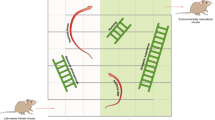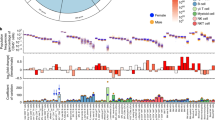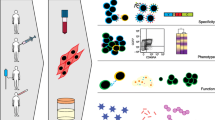Abstract
Classical inbred mouse strains have historically been instrumental in mapping immunological traits. However, most of the classical strains originate from a relatively limited number of founder animals, largely within the Mus musculus domesticus subspecies. Therefore, their genetic diversity is ultimately limited. For this reason, it is not feasible to use these mice for exhaustive interrogation of immune signaling pathways. In order to investigate networks through forward genetic analysis, larger genetic diversity is required than is introduced under laboratory conditions. Recently, inbred strains from other mouse subspecies were established such as Mus musculus castaneus and Mus musculus musculus, which diverged from a shared common ancestor with Mus musculus domesticus more than one million years ago. A direct genomic comparison clearly demonstrates the evolutionary divergence that has occurred between wild-derived mice and the classical inbred strains. When compared to classical inbred strains, wild-derived mice exhibit polymorphisms every 100–200 base pairs. Studying the molecular basis of these traits provides us with insight into how the immune system can evolve regulatory features to accommodate environment-specific constraints. Because most wild-derived strains are able to breed with classical inbred mice, they represent a rich source of evolutionarily significant diversity for forward genetic studies. These organisms are an emerging, though still largely unexplored, model for the identification and study of novel immunological genes.
Similar content being viewed by others
References
Akira S, Takeda K (2004) Functions of toll-like receptors: lessons from KO mice. C R Biol 327(6):581–589
Americo JL, Moss B, Earl PL (2010) Identification of wild-derived inbred mouse strains highly susceptible to monkeypox virus infection for use as small animal models. J Virol 84(16):8172–8180
Americo JL et al (2014) Susceptibility of the wild-derived inbred CAST/Ei mouse to infection by orthopoxviruses analyzed by live bioluminescence imaging. Virology 449:120–132
Beutler B, Mahoney J, Le Trang N, Pekala P, Cerami A (1985) Purification of cachectin, a lipoprotein lipase-suppressing hormone secreted by endotoxin-induced RAW 264.7 cells. J Exp Med 161(5):984–995
Beutler B, Du X, Hoebe K (2003) From phenomenon to phenotype and from phenotype to gene: forward genetics and the problem of sepsis. J Infect Dis 187(Suppl 2):S321–S326
Casanova JL, Schurr E, Abel L, Skamene E (2002) Forward genetics of infectious diseases: immunological impact. Trends Immunol 23(10):469–472
Churchill GA, Gatti DM, Munger SC, Svenson KL (2012) The Diversity outbred mouse population. Mamm Genome 23(9–10):713–718
Conner JR, Smirnova II, Poltorak A (2008) Forward genetic analysis of Toll-like receptor responses in wild-derived mice reveals a novel antiinflammatory role for IRAK1BP1. J Exp Med 205(2):305–314
Conner JR, Smirnova II, Poltorak A (2009) A mutation in Irak2c identifies IRAK-2 as a central component of the TLR regulatory network of wild-derived mice. J Exp Med 206(7):1615–1631
Conner JR, Smirnova II, Moseman AP, Poltorak A (2010) IRAK1BP1 inhibits inflammation by promoting nuclear translocation of NF-kappaB p50. Proc Natl Acad Sci USA 107(25):11477–11482
Croker B et al (2007) ATP-sensitive potassium channels mediate survival during infection in mammals and insects. Nat Genet 39(12):1453–1460
Curtis DJ (2004) Modifier screens in the mouse: time to move forward with reverse genetics. Proc Natl Acad Sci USA 101(19):7209–7210
Dejager L, Libert C, Montagutelli X (2009) Thirty years of Mus spretus: a promising future. Trends Genet 25(5):234–241
Dinarello CA (1994) The interleukin-1 family: 10 years of discovery. FASEB J 8(15):1314–1325
Earl PL, Americo JL, Moss B (2012) Lethal monkeypox virus infection of CAST/EiJ mice is associated with a deficient gamma interferon response. J Virol 86(17):9105–9112
Earl PL, Americo JL, Moss B (2015a) Genetic studies of the susceptibility of classical and wild-derived inbred mouse strains to monkeypox virus. Virology 481:161–165
Earl PL, Americo JL, Cotter CA, Moss B (2015b) Comparative live bioluminescence imaging of monkeypox virus dissemination in a wild-derived inbred mouse (Mus musculus castaneus) and outbred African dormouse (Graphiurus kelleni). Virology 475:150–158
Eppig JT, et al (2015) Mouse genome database: from sequence to phenotypes and disease models. Genesis 53(8):458–473
Frazer KA et al (2007) A sequence-based variation map of 8.27 million SNPs in inbred mouse strains. Nature 448(7157):1050–1053
Gregorova S et al (2008) Mouse consomic strains: exploiting genetic divergence between Mus m. musculus and Mus m. domesticus subspecies. Genome Res 18(3):509–515
Guenet JL, Bonhomme F (2003) Wild mice: an ever-increasing contribution to a popular mammalian model. Trends Genet 19(1):24–31
Hoebe K, Beutler B (2005) Unraveling innate immunity using large scale N-ethyl-N-nitrosourea mutagenesis. Tissue Antigens 65(5):395–401
Hoebe K et al (2006) Genetic analysis of innate immunity. Adv Immunol 91:175–226
Ideraabdullah FY et al (2004) Genetic and haplotype diversity among wild-derived mouse inbred strains. Genome Res 14(10A):1880–1887
Ishikawa A (2013) Wild mice as bountiful resources of novel genetic variants for quantitative traits. Curr Genomics 14(4):225–229
Jiang Z et al (2005) CD14 is required for MyD88-independent LPS signaling. Nat Immunol 6(6):565–570
Jin L et al (2008) MPYS, a novel membrane tetraspanner, is associated with major histocompatibility complex class II and mediates transduction of apoptotic signals. Mol Cell Biol 28(16):5014–5026
Khan R et al (2012) Refinement of the genetics of the host response to Salmonella infection in MOLF/Ei: regulation of type 1 IFN and TRP3 pathways by Ity2. Genes Immun 13(2):175–183
Khan RT, Yuki KE, Malo D (2014a) Fine-mapping and phenotypic analysis of the Ity3 Salmonella susceptibility locus identify a complex genetic structure. PLoS ONE 9(2):e88009
Khan RT, Chevenon M, Yuki KE, Malo D (2014b) Genetic dissection of the ity3 locus identifies a role for ncf2 co-expression modules and suggests selp as a candidate gene underlying the ity3.2 locus. Front Immunol 5:375
Koide T et al (1998) A new inbred strain JF1 established from Japanese fancy mouse carrying the classic piebald allele. Mamm Genome 9(1):15–19
Lazzarano S et al (2018) Genetic mapping of species differences via in vitro crosses in mouse embryonic stem cells. Proc Natl Acad Sci USA 115(14):3680–3685
Link VM et al (2018) Analysis of genetically diverse macrophages reveals local and domain-wide mechanisms that control transcription factor binding and function. Cell 173(7):1796–1809
Liu YH et al (2008) Mosaic genealogy of the Mus musculus genome revealed by 21 nuclear genes from its three subspecies. Genes Genet Syst 83(1):77–88
Mahieu T et al (2006) The wild-derived inbred mouse strain SPRET/Ei is resistant to LPS and defective in IFN-beta production. Proc Natl Acad Sci USA 103(7):2292–2297
Maurizio PL, Ferris MT (2017) The collaborative cross resource for systems genetics research of infectious diseases. Methods Mol Biol 1488:579–596
Moriwaki K et al (2009) Unique inbred strain MSM/Ms established from the Japanese wild mouse. Exp Anim 58(2):123–134
Moseman AP et al (2013) Mannose receptor 1 mediates cellular uptake and endosomal delivery of CpG-motif containing oligodeoxynucleotides. J Immunol 191(11):5615–5624
Mott R, Flint J (2013) Dissecting quantitative traits in mice. Annu Rev Genomics Hum Genet 14:421–439
Mouse Genome Sequencing C (2002) Initial sequencing and comparative analysis of the mouse genome. Nature 420(6915):520–562
Muramatsu M et al (1999) Specific expression of activation-induced cytidine deaminase (AID), a novel member of the RNA-editing deaminase family in germinal center B cells. J Biol Chem 274(26):18470–18476
O’Shea JJ et al (2009) Signal transduction and Th17 cell differentiation. Microbes Infect 11(5):599–611
Oda K, Kitano H (2006) A comprehensive map of the toll-like receptor signaling network. Mol Syst Biol 2:0015
Parnas O et al (2015) A genome-wide CRISPR screen in primary immune cells to dissect regulatory networks. Cell 162(3):675–686
Peters LL et al (2007) The mouse as a model for human biology: a resource guide for complex trait analysis. Nat Rev Genet 8(1):58–69
Phifer-Rixey M, Bomhoff M, Nachman MW (2014) Genome-wide patterns of differentiation among house mouse subspecies. Genetics 198(1):283–297
Pinheiro I et al (2013) LPS resistance of SPRET/Ei mice is mediated by Gilz, encoded by the Tsc22d3 gene on the X chromosome. EMBO Mol Med 5(3):456–470
Poltorak A et al (1998) Defective LPS signaling in C3H/HeJ and C57BL/10ScCr mice: mutations in Tlr4 gene. Science 282(5396):2085–2088
Ram DR et al (2016) Balance between short and long isoforms of cFLIP regulates Fas-mediated apoptosis in vivo. Proc Natl Acad Sci USA 113(6):1606–1611
Rizvi AH et al (2017) Single-cell topological RNA-seq analysis reveals insights into cellular differentiation and development. Nat Biotechnol 35(6):551–560
Sancho-Shimizu V, Malo D (2006) Sequencing, expression, and functional analyses support the candidacy of Ncf2 in susceptibility to Salmonella typhimurium infection in wild-derived mice. J Immunol 176(11):6954–6961
Sancho-Shimizu V et al (2007) Molecular genetic analysis of two loci (Ity2 and Ity3) involved in the host response to infection with Salmonella typhimurium using congenic mice and expression profiling. Genetics 177(2):1125–1139
Schworer SA et al (2014) Toll-like receptor-mediated downregulation of the deubiquitinase CYLD protects macrophages from necroptosis in wild-derived mice. J Biol Chem 289(20):14422–14433
Sebastiani G et al (1998) Mapping of genetic modulators of natural resistance to infection with Salmonella typhimurium in wild-derived mice. Genomics 47(2):180–186
Sebastiani G et al (2002) Host immune response to Salmonella enterica serovar Typhimurium infection in mice derived from wild strains. Infect Immun 70(4):1997–2009
Shmulewitz D et al (2006) Linkage analysis of quantitative traits for obesity, diabetes, hypertension, and dyslipidemia on the island of Kosrae, Federated States of Micronesia. Proc Natl Acad Sci USA 103(10):3502–3509
Staelens J et al (2002) Hyporesponsiveness of SPRET/Ei mice to lethal shock induced by tumor necrosis factor and implications for a TNF-based antitumor therapy. Proc Natl Acad Sci USA 99(14):9340–9345
Stetson DB, Medzhitov R (2006) Recognition of cytosolic DNA activates an IRF3-dependent innate immune response. Immunity 24(1):93–103
Surpris G et al (2015) Cutting edge: novel Tmem173 allele reveals importance of STING N terminus in trafficking and type I IFN production. J Immunol 196(2):547–552
Timmermans S, Van Montagu M, Libert C (2017) Complete overview of protein-inactivating sequence variations in 36 sequenced mouse inbred strains. Proc Natl Acad Sci USA 114(34):9158–9163
Watanabe Y (2004) Fifty years of interference. Nat Immunol 5(12):1193
Wayne ML, McIntyre LM (2002) Combining mapping and arraying: an approach to candidate gene identification. Proc Natl Acad Sci USA 99(23):14903–14906
White MA, Ane C, Dewey CN, Larget BR, Payseur BA (2009) Fine-scale phylogenetic discordance across the house mouse genome. PLoS Genet 5(11):e1000729
Yang H, Bell TA, Churchill GA, Pardo-Manuel de Villena F (2007) On the subspecific origin of the laboratory mouse. Nat Genet 39(9):1100–1107
Yang H et al (2011) Subspecific origin and haplotype diversity in the laboratory mouse. Nat Genet 43(7):648
Yokoshiki H, Sunagawa M, Seki T, Sperelakis N (1998) ATP-sensitive K(+) channels in pancreatic, cardiac, and vascular smooth muscle cells. Am J Physiol Cell Physiol 274(1):C25–C37
Funding
Funding was funded by National Institute of Allergy and Infectious Diseases (Grant Nos. AI119833, AI126050, AI126489 to A.P) and Russian Science Fund Project 15-15-00100.
Author information
Authors and Affiliations
Corresponding author
Rights and permissions
About this article
Cite this article
Poltorak, A., Apalko, S. & Sherbak, S. Wild-derived mice: from genetic diversity to variation in immune responses. Mamm Genome 29, 577–584 (2018). https://doi.org/10.1007/s00335-018-9766-3
Received:
Accepted:
Published:
Issue Date:
DOI: https://doi.org/10.1007/s00335-018-9766-3




